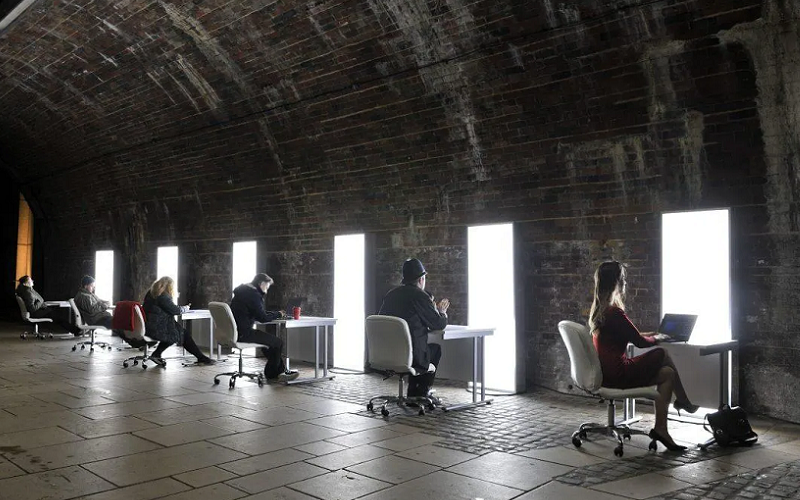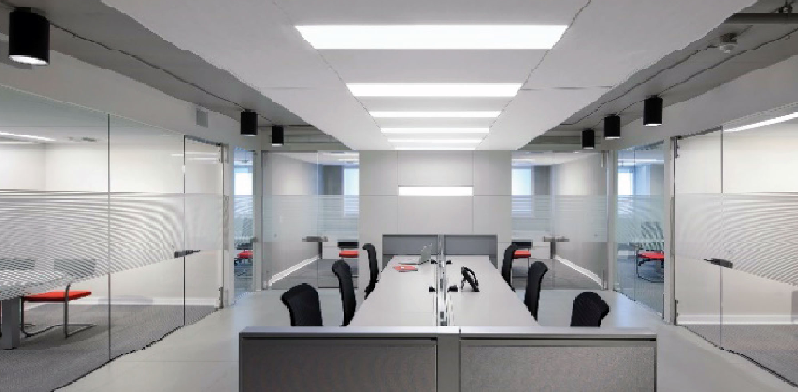
In the bustling world we inhabit, artificial lighting has become as ubiquitous as the air we breathe, illuminating our homes, workplaces, and public spaces. While its primary role is to banish darkness and enhance visibility, the influence of artificial lighting extends far beyond mere illumination. It subtly interweaves with our cognitive functions and overall mental well-being, casting a significant but often overlooked impact on our daily lives.
Contents
- Understanding Artificial Lighting
- The Science Behind Light and Cognitive Functions
- Artificial Lighting and Mental Acuity: The Connection
- Navigating the Effects of Artificial Lighting
- References
Understanding Artificial Lighting
Artificial lighting is a cornerstone of modern civilization, enabling productivity, safety, and convenience after the sun sets. But what exactly encompasses artificial lighting? And how did we come to rely so heavily on it? This section explores the nature of artificial lighting, its various forms, and its evolution over time.
Definition and Types of Artificial Lighting
Artificial lighting refers to the use of man-made sources of light to illuminate spaces that are dark or to enhance natural light during the day. It plays a crucial role in our daily lives, affecting everything from our work environment to our home comfort. There are several types of artificial lighting, each with its own characteristics and uses.
Incandescent Bulbs
The oldest form of artificial lighting still in use today, incandescent bulbs work by passing electricity through a filament, heating it until it glows. These bulbs are known for their warm light but are less energy-efficient compared to newer technologies.
Fluorescent Lights
Utilizing a different mechanism, fluorescent lights pass electricity through a gas, causing the gas to emit ultraviolet light. This light then stimulates a fluorescent coating inside the bulb to produce visible light. Fluorescent lights are more energy-efficient than incandescent bulbs and are commonly used in office buildings and schools.
LED Lights
Light Emitting Diodes (LEDs) represent the latest advancement in lighting technology. LEDs are highly energy-efficient and durable, making them increasingly popular for both residential and commercial use. They work by passing an electrical current through a semiconductor material, which then emits light.
Historical Context and Evolution of Lighting Technologies
The journey from the first controlled use of fire by ancient humans to the development of LED lighting technology is a fascinating tale of innovation and adaptation. Initially, humans relied on natural light sources, such as the sun, moon, and fire. The invention of the oil lamp, followed by the gas lamp, marked significant advancements in our ability to light our surroundings.
The 19th century saw the introduction of electric lighting, revolutionizing the way we live and work. The incandescent bulb, invented by Thomas Edison and others, brought artificial lighting into homes and businesses, extending productive hours beyond sunset. The 20th century introduced fluorescent and halogen lamps, offering new options for energy efficiency and lighting quality [1].
In recent decades, LED technology has surged to the forefront, heralded for its efficiency, longevity, and minimal environmental impact. This rapid evolution reflects our ongoing quest for better, more sustainable ways to light our world.
The Prevalence of Artificial Lighting in Modern Environments
Today, artificial lighting is omnipresent. From the bright lights of city skylines to the soft glow of a bedside lamp, it shapes our environments and our experiences within them. The transition to widespread use of artificial lighting has brought undeniable benefits, enabling productivity, enhancing safety, and improving the quality of life.

The Science Behind Light and Cognitive Functions
The interplay between light and the human brain is a subject of ongoing research, revealing intricate connections that influence our cognitive functions and overall well-being.
Overview of Circadian Rhythms and Their Importance
Circadian rhythms are natural, internal processes that regulate the sleep-wake cycle and repeat roughly every 24 hours. They are influenced by various factors, with light being the most significant external cue. These rhythms are crucial for maintaining optimal health and cognitive function, influencing everything from hormone levels to body temperature and sleep patterns [2].
The human brain contains a master clock, the suprachiasmatic nucleus (SCN), located in the hypothalamus. This master clock coordinates all the circadian rhythms throughout the body, ensuring they are synchronized. Light exposure directly influences the SCN’s activity, thereby regulating our alertness, sleep, and overall health.
The Role of Light in Regulating Circadian Rhythms
Light’s impact on circadian rhythms cannot be overstated. Exposure to light, especially blue light, which is abundant in daylight, signals the SCN to suppress the production of melatonin, a hormone that promotes sleep, thereby increasing alertness and cognitive function. As the natural light dims in the evening, melatonin production increases, facilitating sleep and recovery.
Artificial lighting, particularly from screens and LED lights, emits significant amounts of blue light, which can interfere with the natural circadian rhythm. This interference can lead to disrupted sleep patterns, reduced sleep quality, and subsequent impacts on cognitive function and mood.
Effects of Artificial Lighting on the Brain’s Clock
The pervasive use of artificial lighting, especially in the evening and night, poses challenges to our circadian rhythms. Exposure to bright artificial light after sunset can trick the brain into thinking it is still daytime, leading to suppressed melatonin production and difficulty falling asleep. This misalignment between our internal clock and the external environment is known as circadian rhythm disruption.
Research has shown that prolonged exposure to artificial lighting, particularly blue light, can lead to significant changes in sleep architecture, including reduced REM sleep, the sleep phase associated with memory consolidation and emotional regulation. Moreover, circadian rhythm disruption has been linked to various cognitive and emotional issues, ranging from impaired memory and reduced attention span to increased risk of depression and anxiety [3].
Artificial Lighting and Mental Acuity: The Connection
As we move deeper into the nuanced relationship between artificial lighting and cognitive functions, it becomes evident that the light enveloping our environments does more than simply make things visible.
Impact on Sleep Quality
One of the most significant ways artificial lighting influences our cognitive function is through its effect on sleep. Adequate sleep is foundational for cognitive processes such as memory consolidation, problem-solving skills, and creative thinking.
Disruption of Sleep Patterns
Exposure to artificial light, especially in the hours leading up to bedtime, can significantly disrupt our natural sleep patterns. The blue light emitted by many artificial sources suppresses melatonin production, making it more difficult to fall asleep and stay asleep. This disruption can lead to a decrease in sleep quality and duration, which, over time, can significantly impair cognitive function.
Consequences of Poor Sleep on Cognitive Performance
The ramifications of disrupted sleep extend far beyond mere tiredness. Chronic sleep deprivation can lead to decreased alertness, impaired memory, reduced problem-solving ability, and diminished attention to detail. These effects can seriously compromise our ability to perform tasks that require mental acuity, thereby impacting our productivity and overall cognitive health.
Direct Effects on Cognitive Functions
Artificial lighting does not only affect cognitive function indirectly through sleep disruption; it also has a more direct impact on our mental processes.
Concentration and Focus
Bright artificial lighting can cause eye strain and visual discomfort, leading to difficulties in maintaining concentration and focus over prolonged periods. This can significantly affect productivity and the quality of work or study.
Memory Retention and Recall
There is evidence to suggest that exposure to natural light during the day can enhance memory retention and recall. Conversely, excessive artificial lighting, particularly during the evening, can interfere with these cognitive processes, likely due to its impact on sleep and circadian rhythms [4].
Decision-Making Abilities
The quality of light in our environments can also affect our decision-making abilities. Poor lighting conditions can lead to increased stress and fatigue, which, in turn, can impair our ability to make informed and rational decisions.
Mood and Emotional Well-Being
The influence of artificial lighting extends beyond cognitive performance to affect our mood and emotional well-being.
Links Between Lighting, Mood, and Anxiety Levels
Exposure to natural light has been shown to improve mood and reduce the risk of depression and anxiety. In contrast, environments dominated by artificial lighting, especially those lacking exposure to natural light, can have the opposite effect, potentially leading to increased feelings of stress and anxiety.
The Influence of Lighting on Stress and Relaxation
The intensity and color temperature of artificial lighting can significantly influence our levels of stress and relaxation. For instance, warmer, dimmer lights tend to promote relaxation, while brighter, cooler lights can increase alertness but also stress levels if used inappropriately.

Given the significant impact artificial lighting can have on our mental acuity and well-being, it’s essential to navigate these effects thoughtfully. By adopting specific strategies and making informed choices about our lighting environments, we can mitigate negative impacts while enhancing our cognitive function and mood.
Recommendations for Minimizing Negative Impacts
The goal of optimizing our lighting environments is to align more closely with natural light patterns and minimize the disruptive effects of artificial lighting, particularly before bedtime.
Optimal Lighting Conditions for Cognitive Health
To support cognitive health, create lighting conditions that mimic the natural progression of light throughout the day. Utilize brighter, cooler lights during the morning and afternoon to stimulate alertness and productivity. As evening approaches, transition to warmer, dimmer lighting to prepare the body for sleep [5].
Use of Blue Light Filters and Specialized Eyewear
Given the significant role of blue light in disrupting sleep patterns, employing blue light filters on digital devices in the evening can help mitigate this effect. Additionally, wearing specialized eyewear that blocks blue light can further protect against sleep disruption and eye strain.
Innovative Lighting Solutions and Technologies
Advancements in lighting technology offer new ways to enhance our living and working environments while addressing the challenges posed by artificial lighting.
Smart Lighting Systems
Smart lighting technologies enable users to customize their lighting based on time of day, activity, or mood. These systems can automatically adjust the color temperature and brightness, mimicking natural light patterns and supporting circadian rhythms.
Human-Centric Lighting Designs
Human-centric lighting (HCL) is an innovative approach that prioritizes human health and productivity. HCL systems are designed to enhance comfort, mood, and performance by simulating natural light variations throughout the day. They are particularly useful in settings without sufficient natural light exposure.
Lifestyle Adjustments and Environmental Modifications
Making conscious lifestyle adjustments and modifying our environments can significantly improve our exposure to beneficial lighting.
Maximizing Exposure to Natural Light
Whenever possible, seek to increase your exposure to natural light during the day. This can involve strategic placement of workspaces near windows or taking breaks outdoors to benefit from daylight.
Establishing Healthy Light-Exposure Routines
Develop routines that reduce exposure to bright and blue light in the evening, such as limiting screen time and using dim, warm lights. Encouraging exposure to morning light can help reset the body’s circadian rhythm, promoting better sleep and cognitive function.
References
[1] Artificial light exposure is extremely harmful to our mental health
[2] Effects of artificial light at night on human health: A literature review of observational and experimental studies applied to exposure assessment
[3] Light pollution affects human health
[4] Artificial light and neurodegeneration: does light pollution impact the development of Alzheimer’s disease?
[5] The Impact of Artificial Lighting on Human Health

